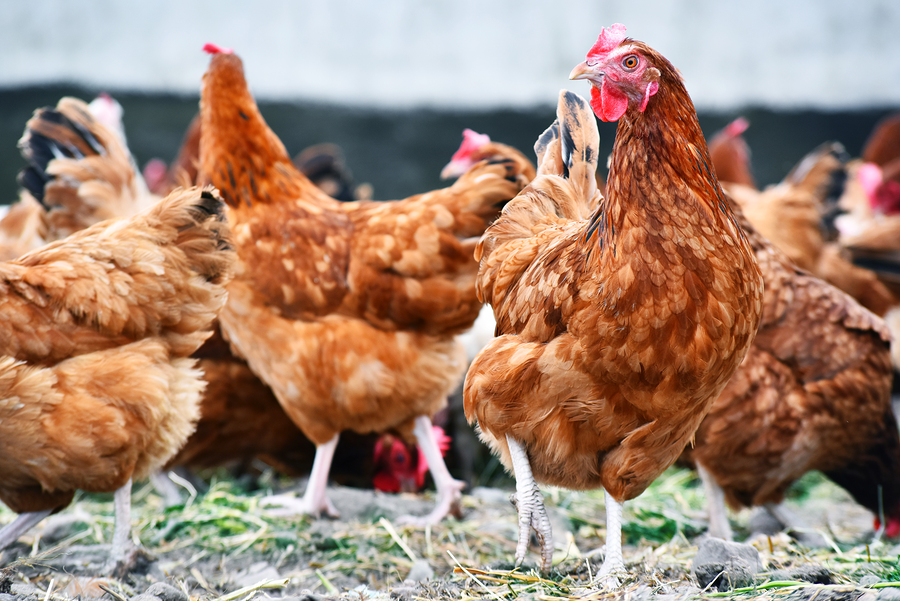Last month, San Francisco’s Board of Supervisors passed a city ordinance requiring grocery stores to report details about antibiotics used in the meat and poultry they sell. Although San Francisco is the first to take this action, it could be the start of a widespread movement to respond to growing consumer concerns regarding antibiotics.
The ordinance will make all the information public – even consumers from other cities and states will have access. What does this mean for meat and poultry processors?
The ordinance
On October 17, San Francisco’s Board of Supervisors unanimously voted “yea” on the new ordinance. Grocery stores within the city limits that have 25 stores or more are subject to enforcement, including big players like Walmart, Safeway, and Target. Each store has to disclose specific information about their meat and poultry suppliers, including what antibiotics were used on the animals and in what quantity.
City departments are also subject to the ordinance, including San Francisco General Hospital and the county jail. They’ll have to list all of their suppliers, which ones use antibiotics, and what the cost would be to switch to antibiotic-free meat and poultry.
The goal of the ordinance is to end unnecessary antibiotic use, which leads to antibiotic resistance. According to the CDC, 2 million Americans contract antibiotic-resistant infections each year. 23,000 people die from them. The CDC notes that antibiotic use in food animals contributes to these infections. The agency cites research showing that:
- Antibiotic use in food animals allows antibiotic-resistant bacteria to grow and crowd out the bacteria that do respond to antibiotics;
- Resistant bacteria can contaminate food from the animals; and
- Resistant bacteria in food can cause infections in humans.
The ordinance referenced a 2012 report by the National Antimicrobial Resistance Monitoring System (NARMS) that found that 33% of Salmonella, 60% of Enterococcus faecium, 30% of E. coli, and 11% of Campylobacter coli found in chicken were resistant to three or more classes of antibiotics.
However, the news isn’t all bad. In fact, the industry has been successful at eliminating bacteria that can cause foodborne illness. According to the more recent NARMS 2015 Integrated Report, the prevalence of Salmonella in retail chicken is at an all-time low, and Campylobacter and E. coli recovery is in steady decline.
You can find more detailed information about antibiotic resistance in the FDA’s tool NARMS Now.
Industry response
The meat and poultry industry is not happy with the new rule. The North American Meat Institute called the ordinance “a recipe for disaster.” The main issue the industry has with the ordinance are the cost of the required documentation, which they say is duplicative and will cause prices to rise.
The FMI said it is “disappointed that in the passage of this ordinance, the Board did not take into consideration the concerns of the city’s grocers, their customers, or the commonsense modifications proposed by FMI to exempt products marked as USDA certified organic, ‘Raised without Antibiotics’ or an approved variation of this nomenclature.”
What does this mean for meat and poultry processors?
Consumers today want fresher, more natural foods. That includes antibiotic-free meats. In fact, a 2015 Hartman Group study found that 56% of consumers look specifically for antibiotic-free products.
Several processors, as well as retail establishments, have already started to respond to this demand. Both Tyson and Perdue offer antibiotic-free chicken. Earlier this year, Smithfield Farms, which has has been reporting its antibiotics usage since 2007, announced an antibiotic-free line of fresh pork products. And Chick-Fil-A is phasing out chickens raised with antibiotics in the next five years.
Will other companies follow suit?
San Francisco is notoriously progressive, but Seattle, Portland, and other large cities aren’t far behind. Although there aren’t any rumbles yet, it’s possible that the San Francisco ordinance is a sign of things to come.
But, even if they don’t, consumers continue to demand more free-from foods and more transparency about what’s in the products they eat. Between 2011 and 2015, sales of products labeled antibiotic-free grew 28.7%. As more companies provide these products, those that don’t will find themselves at a disadvantage.
The good news for processors concerned about the cost of such initiatives is that consumers are willing to pay more for these products. A 2012 Consumer Reports survey found that more than one-third of consumers are willing to pay $1.00 or more per pound for meat raised without antibiotics.
